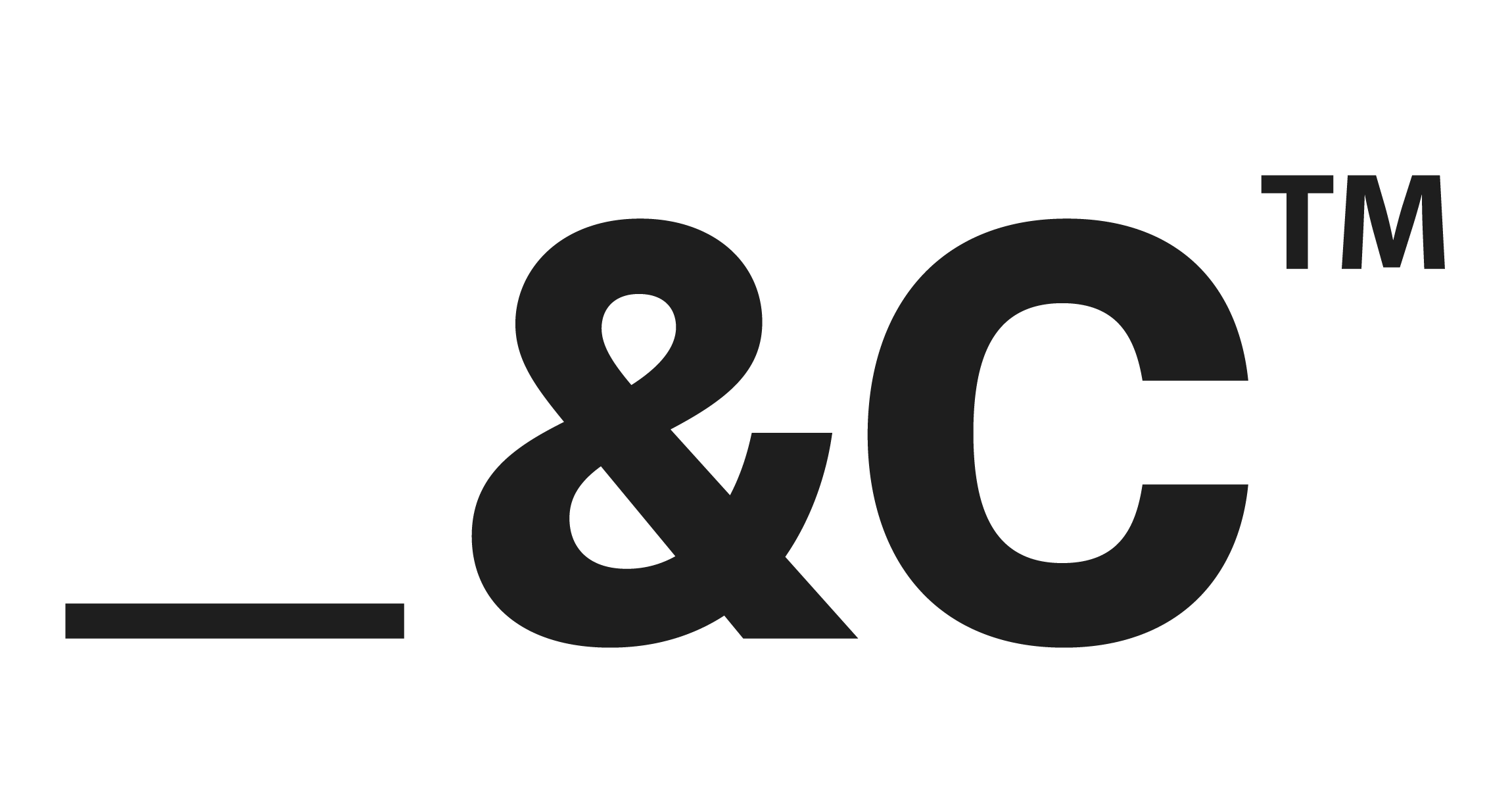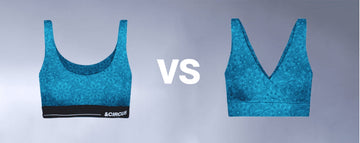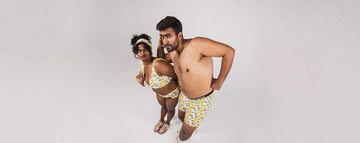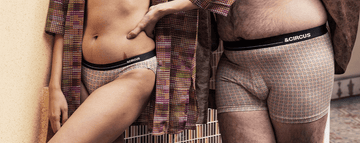Quick Listen:
Picture a bustling department store, racks brimming with clothes, shoppers weaving through aisles. But something's different now. Beyond the allure of style or fit, customers are pausing, squinting at tags, hunting for terms like “organic” or “sustainably sourced.” This isn't just a trend it's a revolution. The fashion industry, once notorious for its environmental footprint, is being reshaped by consumers who demand accountability. From carbon emissions to textile waste, the stakes are high, and nowhere is this shift more personal than in the intimatewear sector, where eco-friendly fabrics like micromodal are redefining what it means to dress with purpose.
The fashion world is at a crossroads. The global sustainable fashion market, valued at USD 7,805.5 million in 2024, is projected to soar to USD 39,840.47 million by 2032, growing at a compound annual growth rate of 22.60%. This surge reflects a seismic shift in consumer behavior, particularly among millennials and Gen Z, who prioritize brands that mirror their environmental values. The industry's pivot toward circular economies emphasizing recycling and waste reduction has fueled demand for greener practices, especially in everyday essentials like underwear.
The numbers paint a troubling backdrop. The clothing sector, valued at USD 1.3 trillion and employing over 300 million people, has a dark side. Global fibre production nearly doubled from 58 million tonnes in 2000 to 116 million tonnes in 2022, with forecasts predicting 147 million tonnes by 2030 if trends persist, according to Textile Exchange. Consumers bought 60% more garments in 2014 than in 2000 but kept them for half as long, per McKinsey & Company. This fast-fashion frenzy makes the industry the second-largest consumer of water, responsible for 2-8% of global carbon emissions, and sees 85% of textiles dumped annually. Even washing synthetic clothes releases microplastics into oceans, compounding the crisis.
Uncomfortable underwear shouldn't steal your confidence. At Andcircus, we craft ultra-soft, sustainable Lenzing Modal Micro® innerwear for every body, XS to 5XL. From briefs to bras, our custom packs fit you perfectly. Shop risk-free with our 100% satisfaction guarantee and embrace comfort that includes everyone. #LoveEveryBody. Shop Now!
The Rise of Eco-Friendly Fabrics
Amid this environmental reckoning, a green wave is sweeping through apparel. Shoppers are flocking to plant-based, biodegradable materials like micromodal, bamboo, and organic cotton. Certifications such as OEKO-TEX®, FSC®, and GOTS are becoming more sought-after, signaling trust in sustainable practices. Brands are also embracing zero-waste packaging and carbon-neutral shipping, while circular design creating clothes meant to be recycled or repurposed is gaining momentum. In intimatewear, where comfort meets conscience, these trends resonate deeply. Consumers want underwear that's soft, breathable, and kind to the planet.
Micromodal, derived from beech trees, is a standout. It's not only luxurious to the touch but also biodegradable, requiring less water and energy than conventional cotton. Brands like AndCircus are capitalizing on this, crafting men's, women's, and maternity innerwear with sustainable practices. Their focus on quality over mass production aligns with a growing consumer preference for minimalism. In 2025, men lead the sustainable fashion market, driven by a shift toward quality over quantity, while online platforms dominate distribution, offering niche eco-friendly offerings.
Real-World Impact: From Forest to Closet
Intimatewear is uniquely positioned to champion sustainability. Expectant mothers, for instance, are increasingly choosing toxin-free, breathable fabrics like micromodal, driven by concerns for maternal and infant health. AndCircus exemplifies this shift, emphasizing transparent supply chains to build trust. Partnerships with climate-tech platforms allow consumers to trace a garment's journey, from raw material to finished product. This transparency is critical in an era where online sales dominate, holding the largest market share in 2025.
North America leads the sustainable fashion market with a 35.60% share, fueled by eco-conscious lifestyles. The fashion industry faces challenges like supply chain disruptions and declining consumer trust, but brands that deliver authentic sustainability are reaping rewards. By focusing on ethical production, companies are not just meeting demand they're shaping it, turning innerwear into a canvas for environmental advocacy.
The Challenges of Going Green
Transitioning to sustainability isn't easy. Sourcing organic fabrics or securing certifications is costly, often challenging smaller brands. Scaling eco-textile innovations, such as closed-loop recycling, remains a hurdle. Greenwashing erodes trust as consumers grow skeptical of vague claims. Regulatory inconsistencies across markets add confusion, with labeling standards varying widely. These barriers, coupled with climate-driven supply chain issues and economic volatility, make the path to sustainability complex but not insurmountable.
Yet, challenges breed opportunity. Brands that invest in transparency and verifiable sustainability can differentiate themselves. By addressing consumer concerns such as high e-commerce return rates or the need for inclusive designs companies can build loyalty. The sustainable fashion market, valued at USD 12.46 billion in 2025 and projected to reach USD 53.37 billion by 2032, underscores the financial incentive for getting it right.
Opportunities for a Greener Future
Sustainability is more than a buzzword it's a business strategy. Transparent practices foster customer loyalty, while waste reduction and energy-efficient production lower costs. In intimatewear, where eco-friendly fabrics like micromodal meet daily needs, brands have a chance to stand out. AndCircus leverages its ethical focus to appeal to global markets, tapping into the growing export potential for sustainable innerwear. As consumer awareness rises, particularly in North America, brands that prioritize purpose over profit are poised for success.
The data is clear: apparel, especially eco-friendly options, holds a 26.0% market share in 2025, driven by demand for ethical products. Organic fabrics lead the market as consumers prioritize health and wellness. By aligning with these values, brands can not only capture market share but also redefine industry standards, turning sustainability into a competitive advantage.
A Lasting Shift
The move toward sustainable fashion is no fleeting trend it's a paradigm shift. As governments eye stricter environmental regulations, brands face mounting pressure to disclose their impact. For innerwear companies, the mandate is clear: invest in research, prioritize eco-friendly materials, and deliver on promises. The garments we wear closest to our skin are becoming a reflection of our values, a daily reminder that small choices can drive big change. In a world where 85% of textiles end up in landfills, the fashion industry's future hinges on one truth: sustainability isn't just an option it's the only way forward.
Frequently Asked Questions
How are environmental concerns influencing fashion consumers today?
Shoppers are increasingly prioritizing eco-conscious choices, seeking terms like “organic,” “biodegradable,” and “sustainably sourced” on clothing labels. This shift is especially prominent in the intimatewear sector, where consumers demand breathable, toxin-free fabrics like micromodal that align with both comfort and sustainability values.
Why is micromodal fabric gaining popularity in sustainable innerwear?
Micromodal, derived from beech trees, is biodegradable, uses less water than conventional cotton, and offers a luxuriously soft feel. Brands like AndCircus are leveraging it to produce eco-friendly innerwear that supports circular design, traceability, and the growing demand for ethical everyday essentials.
What are the key environmental issues driving the rise of sustainable fashion?
Fast fashion has led to skyrocketing textile waste, water consumption, and carbon emissions. With 85% of clothing ending up in landfills and microplastics polluting oceans, buyers especially millennials and Gen Z are turning to brands that embrace recycling, low-impact fabrics, and transparent supply chains.
Disclaimer: The above helpful resources content contains personal opinions and experiences. The information provided is for general knowledge and does not constitute professional advice.
You may also be interested in: Why Eco-Friendly Bras and Panties Are the New Standard in Intimates
Uncomfortable underwear shouldn't steal your confidence. At Andcircus, we craft ultra-soft, sustainable Lenzing Micro Modal innerwear for every body, XS to 5XL. From briefs to bras, our custom packs fit you perfectly. Shop risk-free with our 100% satisfaction guarantee and embrace comfort that includes everyone. #LoveEveryBody. Shop Now!







































